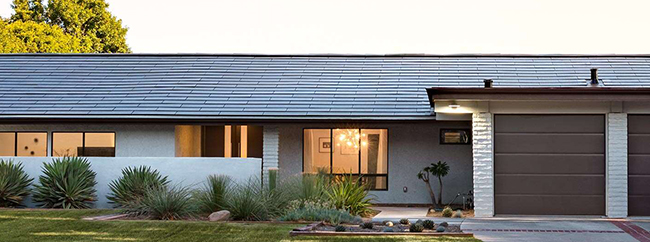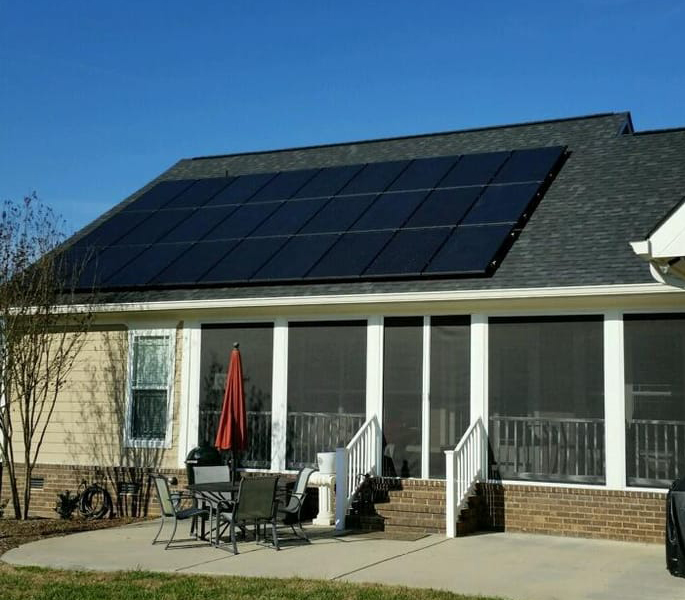SOLAR ROOF BASICS
Save Money While Cutting Greenhouse Gases
If you are thinking about taking the leap to a solar roof and the financial benefit—a sizable source of free electricity—there are several considerations to be aware of. The first is the orientation and location of your roof. For best efficiency, southern-facing roofs work best, but depending on your location, nearby trees, and other factors, southwest-, west- and even southeast-facing roofs may still be able to produce plenty of electricity.
Next consider the square footage of your roof. Is it large enough to accommodate what’s needed for your home’s electric requirements? There are many online solar calculators to help you determine this based on where you live and your electricity usage. Here are two: Solar Review’s solar potential calculator and National Renewable Energy Lab’s solar power calculator.
Next you will need to choose between two approaches: a solar-panel array that sits either on or slightly above an existing roof, or solar tiles or sheeting that replace the external roofing material, which is typically asphalt shingles.
If you are interested in solar sheeting or tiles, know that they are currently expensive but some people find attractiveness warrants the premium. Be sure to look into whether you’ll need a new roof for the installation or not. If you’re starting with a new roof, a solar solution instead of the cost of shingles (or some other roofing material) turns your roof into a contributing asset all that much faster. More information from Solar Magazine here.
If you pick solar panels, you need to know the condition of your roof. How much weight can the roof support? Is there any damage that needs to be repaired? Is it due for new shingles? This may require consultation with a roofer and an engineer.
Once you know your roof will support a solar-panel array, you will choose between two types of solar panels for residential installations: monocrystalline and polycrystalline. Monocrystalline panels tend to be more efficient but on the pricey side; polycrystalline panels are less efficient and cost less.
You’ll also need an inverter to change the voltage. Solar panels produce direct-current (DC) voltage like a battery, but your house uses alternating-current (AC) voltage. There are quite a few on the market; shop carefully and don’t restrict yourself to one review site.
Now, see what federal and state incentives are available. At the moment, the Federal Solar Tax Credit is worth 26% of the cost of an installed solar-panel system. State and local incentives and rebates can save thousands in acquisition and installation costs, depending on the current program. New York currently has a program called NY-Sun that includes generous subsidies and low-cost loans if you qualify – info here.
At some point in this process, you’ll want to find a professional solar installer or contractor. If you plan to use NYSERDA (NY-Sun) incentives, a requirement is to hire a NYSERDA participating contractor. The list for this area is extensive enough to get multiple bids – find it here
Beyond helping to slow global warming, how much will you save in electricity costs? There are multiple variables including the size of the house, how many people live there, and the location of the house, to name a few. Fortunately, like the solar calculators links above, there are good websites with calculators for you to plug your numbers, such as Solar Review’s solar panel cost estimator.
For more information, try links below. After all, it may be time to join the renewable, clean-energy movement in housing. Start to minimizing your home’s carbon footprint, at a cost that eventually pays for itself and then eliminates a monthly expense.

Tesla solar tiles work as roofing while they convert the sun’s rays into electrons, but usually require a new roof.

This 7.3kW home array uses Silfab 270W all-black mono-crystalline solar panels and Everest CrossRail racking.

Closeup view of solar roof shingles.